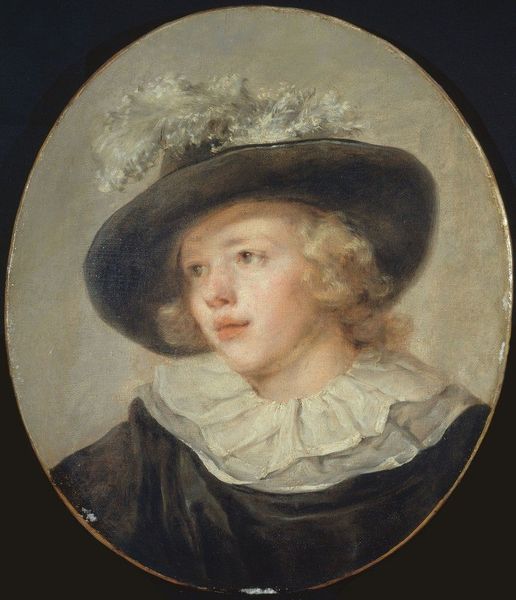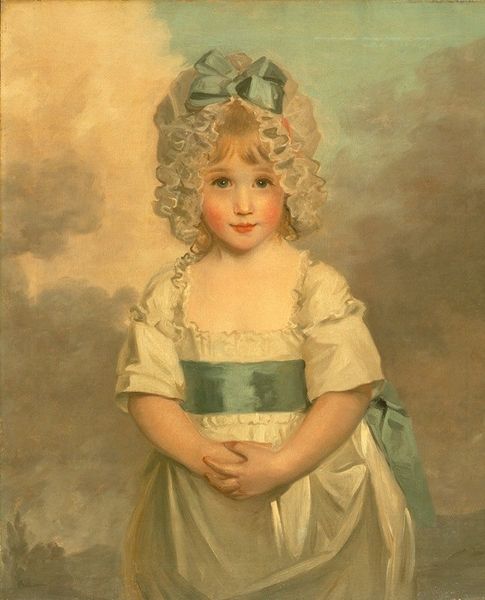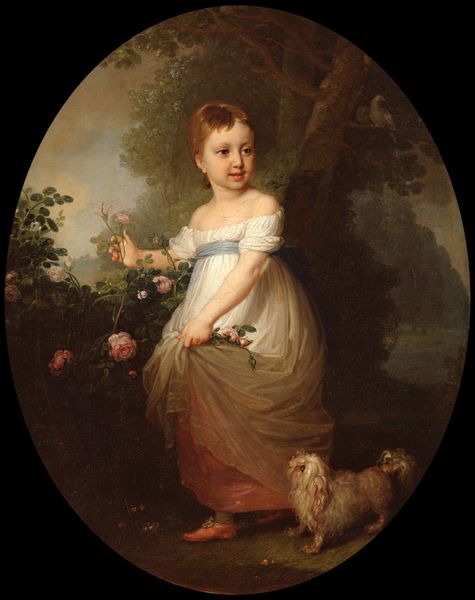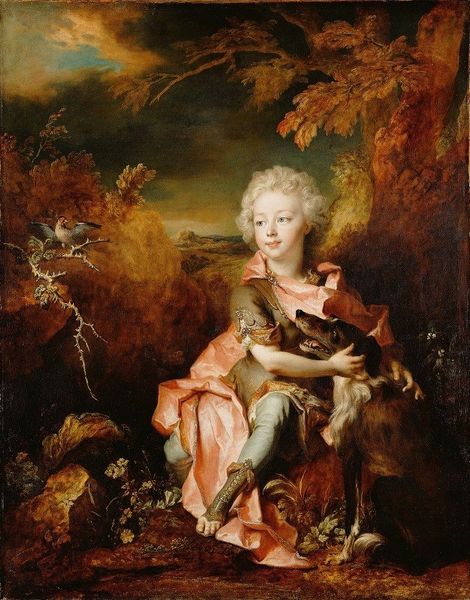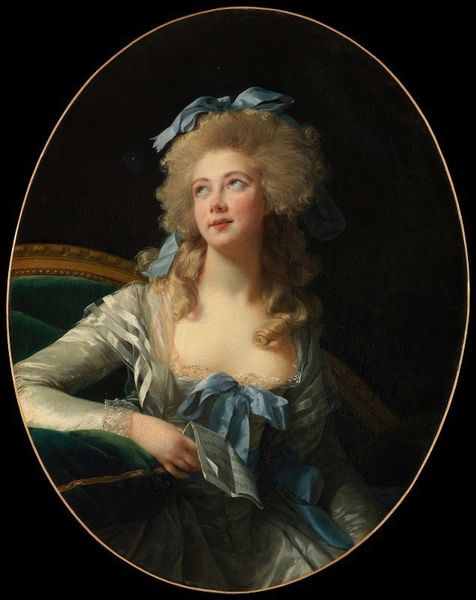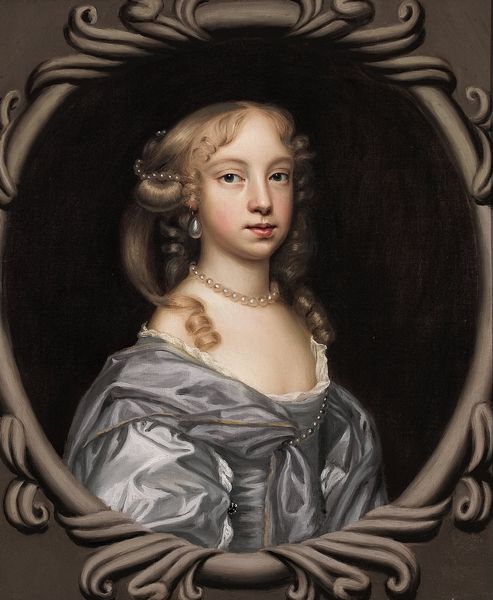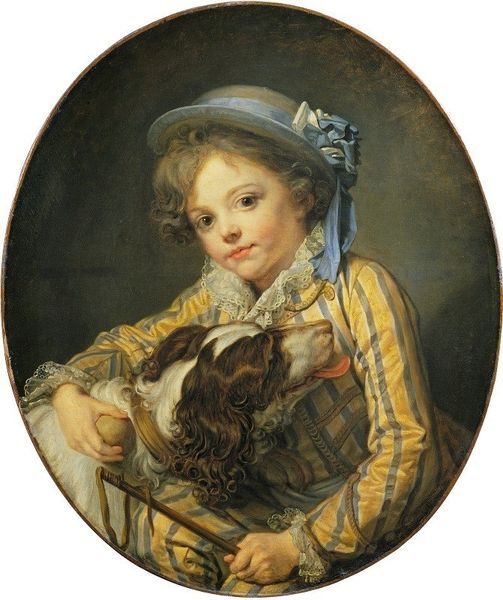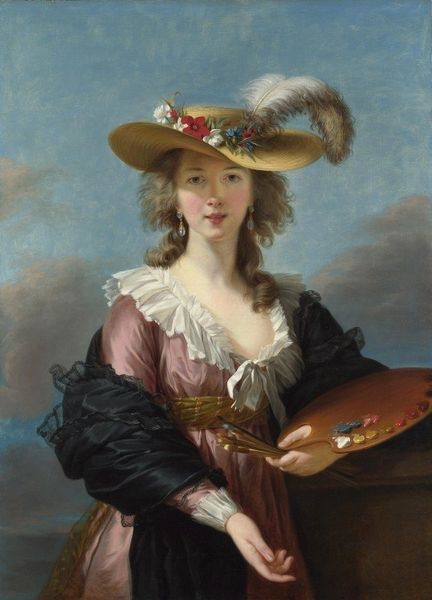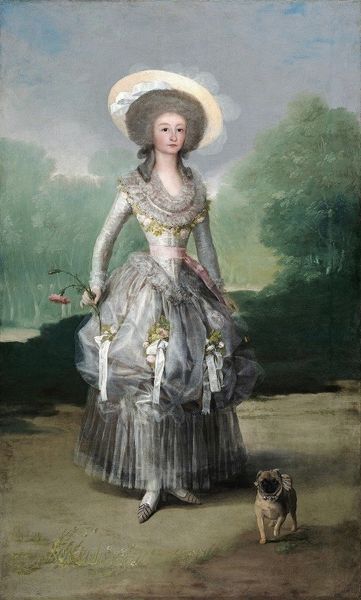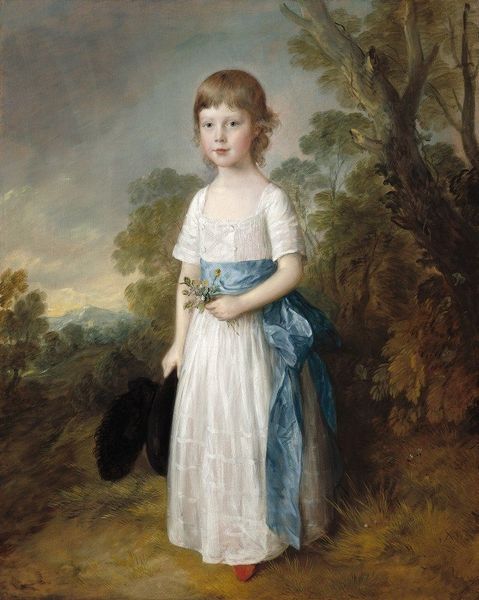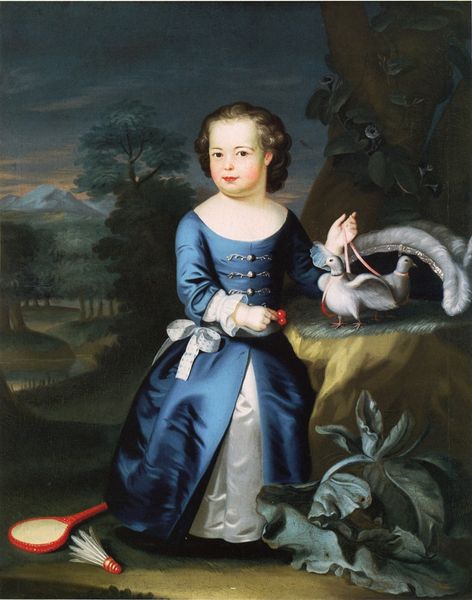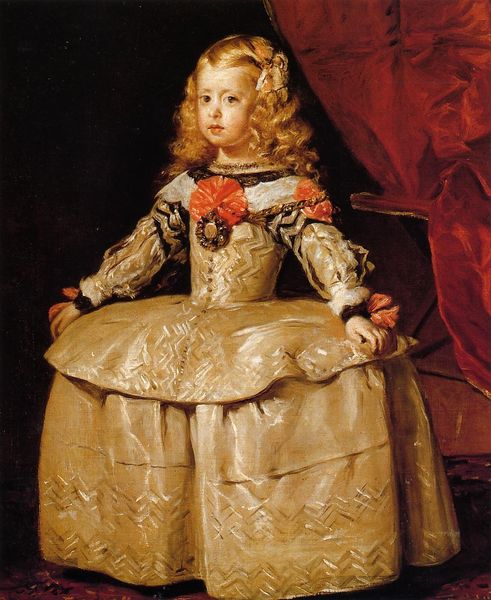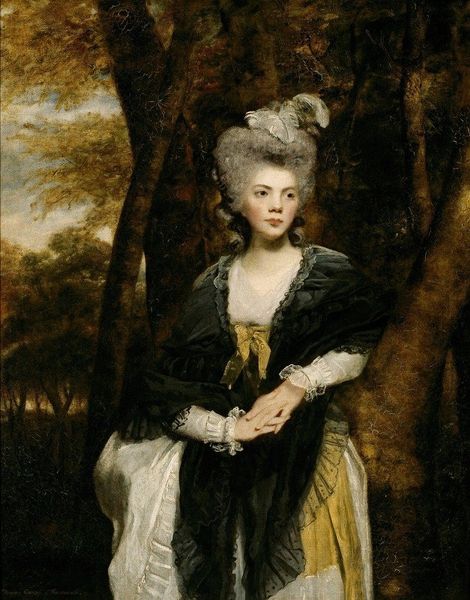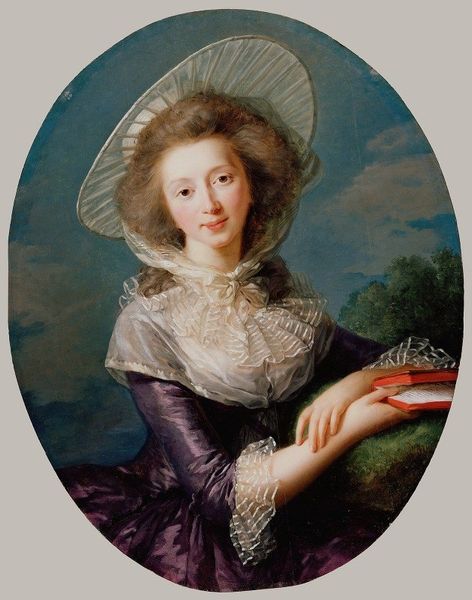
painting, oil-paint
#
portrait
#
painting
#
oil-paint
#
oil painting
#
romanticism
#
genre-painting
#
academic-art
#
portrait art
Copyright: Public domain
Curator: Here we have a portrait entitled "Princess Sophia, after John Hoppner". It is rendered in oil paint. Editor: She looks so prim and proper! But also, kind of lost, doesn't she? Like a little porcelain doll abandoned in a very moody landscape. I keep imagining she's about to be swept away in a storm, which is fabulous, of course. Curator: Well, let's situate the Princess a little more firmly. Hoppner, as a portraitist, really exemplifies the romantic aesthetic within British painting. We must consider the politics of portraiture, particularly how they were mobilized to signify power, legitimacy, and also femininity. Note how Princess Sophia is presented in a soft and sentimental light, but also observe the shadow falling across her face. Editor: Ooh, the shadow play is delightful! It adds so much intrigue to what could have been a sugary-sweet composition. It’s as if a second self is emerging in real-time. That big hat—what's that about? Like, I feel restricted just looking at it! Is this supposed to illustrate her burden of duty or something? Because honestly, the ribbons kind of contradict that theory. Curator: One could argue that the large hat is both decorative and symbolic, potentially indicating the restrictive roles expected of women, especially within the Royal Family, during this period. The ribbons are decorative and serve to feminize her—to emphasize the beauty so crucial in staging her appeal on the marriage market. The contrast in tone also signifies her childhood innocence against encroaching adult responsibility, which is, like, so bleak when you really analyze it. Editor: Innocence colliding with impending societal expectation…okay, that makes sense, and breaks my heart a little. She’s holding roses…they almost seem too heavy for her. I hope she eventually got to be rebellious and wear jeans, or whatever the 18th century equivalent was! Curator: While Princess Sophia may not have gotten to sport blue jeans, as such, understanding her historical and social situation does bring into relief a clearer view of femininity during this historical moment, which gives depth to what would otherwise remain simply another pretty picture of a pretty princess. Editor: Absolutely. That perspective changes everything. Now, instead of a melancholy porcelain doll, I'm seeing a tiny revolutionary waiting for her moment. Love that!
Comments
No comments
Be the first to comment and join the conversation on the ultimate creative platform.
